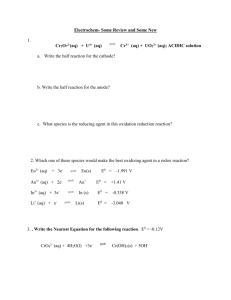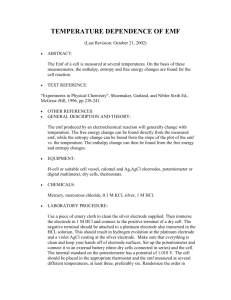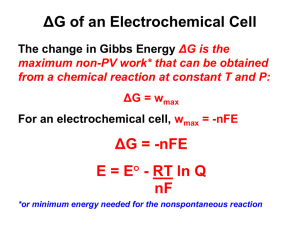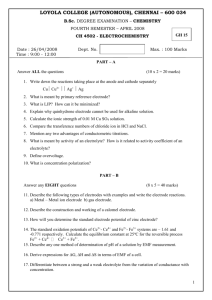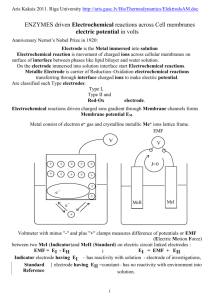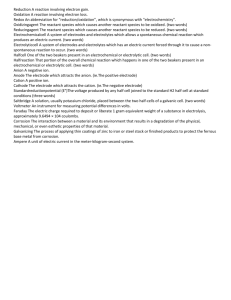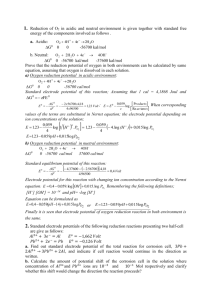1.2.3Nernst equation for electrode potential Consider the following
advertisement
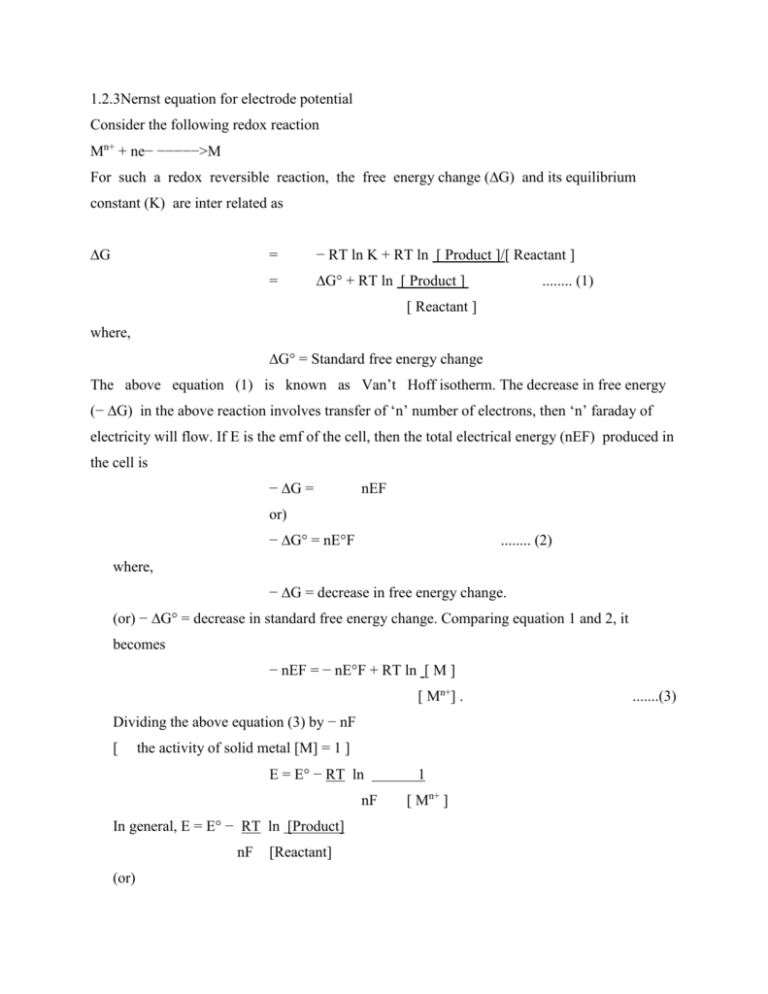
1.2.3Nernst equation for electrode potential Consider the following redox reaction Mn+ + ne− −−−−−>M For such a redox reversible reaction, the free energy change (∆G) and its equilibrium constant (K) are inter related as ∆G = − RT ln K + RT ln [ Product ]/[ Reactant ] = ∆G° + RT ln [ Product ] ........ (1) [ Reactant ] where, ∆G° = Standard free energy change The above equation (1) is known as Van’t Hoff isotherm. The decrease in free energy (− ∆G) in the above reaction involves transfer of ‘n’ number of electrons, then ‘n’ faraday of electricity will flow. If E is the emf of the cell, then the total electrical energy (nEF) produced in the cell is − ∆G = nEF or) − ∆G° = nE°F ........ (2) where, − ∆G = decrease in free energy change. (or) − ∆G° = decrease in standard free energy change. Comparing equation 1 and 2, it becomes − nEF = − nE°F + RT ln [ M ] [ Mn+] . Dividing the above equation (3) by − nF [ the activity of solid metal [M] = 1 ] E = E° − RT ln nF In general, E = E° − RT ln [Product] nF (or) [Reactant] 1 [ Mn+ ] .......(3) E = E° + RT ln [ Mn+ ] nF The above equation 5&6 are known as “Nernst equation for single electrode potential”. Applications of Nernst equations Nernst equation is used to calculate electrode potential of unknown metal. Corrosion tendency of metals can be predicted. 1.2.5 Measurement of Single Electrode Potential It is impossible to determine the absolute value of a single electrode potential. But, we can measure the potential difference between two electrodes potentiometrically, by combining them to form a complete cell. For this purpose, ‘reference electrode’ is used. Standard hydrogen electrode (SHE) is the commonly used reference electrode, whose potential has been arbitrarily fixed as zero. The emf of the cell is measured and it is equal to the potential of electrode. In some cases saturated calomel electrode is used as reference electrode.

